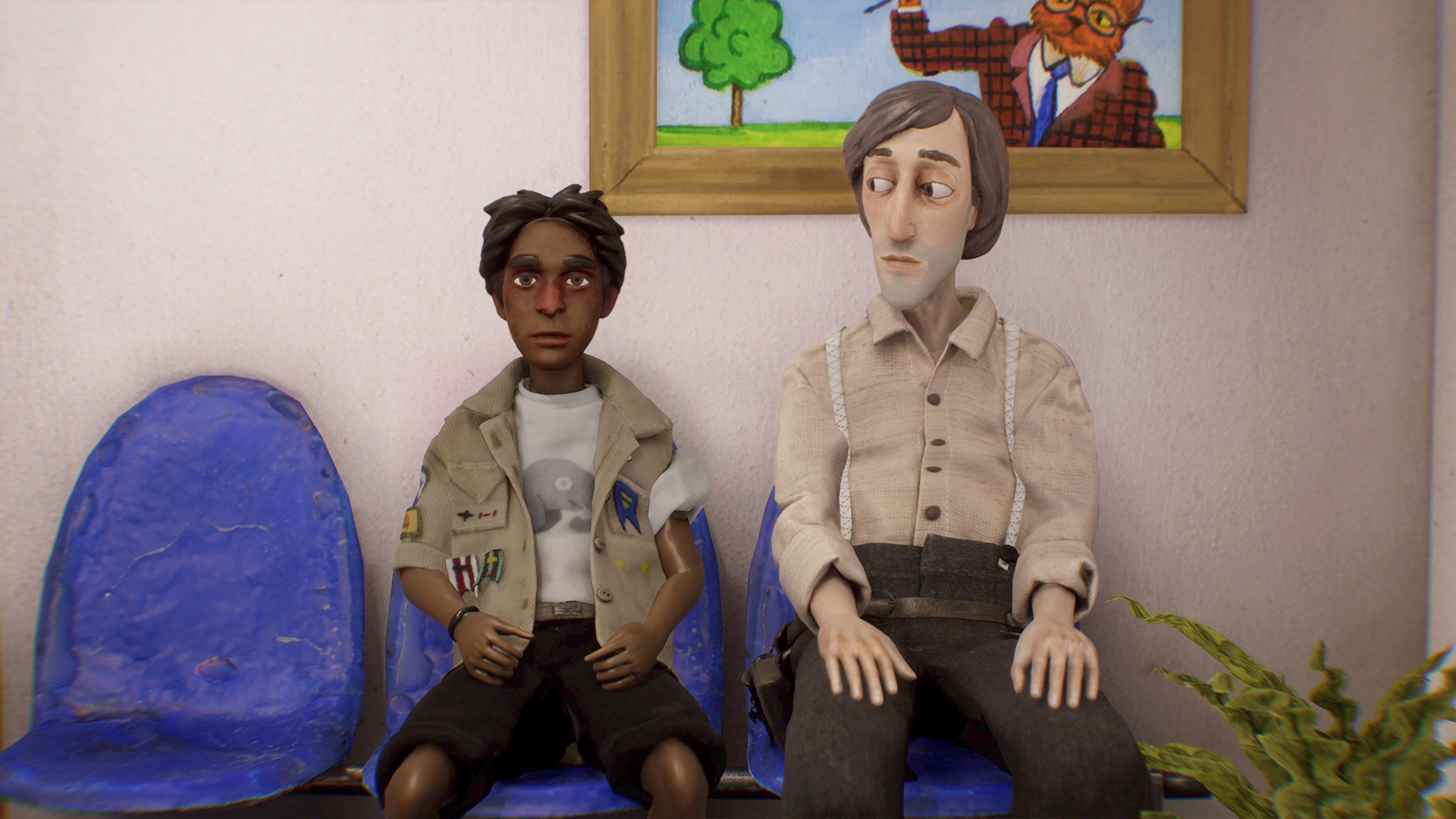Harold Halibut
Harold Halibut is a story-driven adventure game about a young lab assistant/janitor on a shipwrecked ark-like spaceship, Fedora 1. The journey of Fedora 1 started long before Harold was born, in the hope of finding a new home planet. Unfortunately, it crashed and sank on a watery planet, where it could survive, but not escape, resulting in a life stranded in the deep sea. Harold’s adventure is all about the interconnection of a small society, living together in an isolated tiny world without any hope of change - it’s about friendship, mystery, and it’s full of fun and humor.
The origins of Harold Halibut's world are rooted in our real world. Ninety-eight percent of the sets and characters (everything besides glass and transparent objects) are handcraft IRL. Wood, metal, textile, and clay are the heartbeat of the unique art style of Harold's cosmos.
Using a digitizing technique called photogrammetry, the team recreates digital, three-dimensional copies of the analog assets. The result is a stop motion-like game, with all the benefits of modern 3D games with dynamic lighting and motion-captured animations.
3D pipeline
I joined the team of Slow Bros. in 2015, trying to figure out a way to transition from analog to digital. The result was the photogrammetry pipeline that I developed with Onat Hekimoglu, the game's creator. After a year of experimenting and defining the game-ready 3D pipeline, I worked as a part of the digitizing team providing game-ready sets and small assets.
animation pipeline
In 2019, the 3D pipeline ended and I switched to another major focus – the animation pipeline. Since Harold Halibut is a narrative adventure game, it has tons and tons of cutscenes with unique character animations. In total, there are about 7-8 hours of cutscenes with multiple characters acting to fit the voice-over text.
The motion capturing pipeline was efficiently managed by a dynamic duo comprised of just two individuals. Onat skillfully brought all animations to life with his performance, while I handled the technical operations. It was an adventure in its own right, unraveling the proper techniques for recording every detail to seamlessly integrate into the game with fluid transitions, complemented by a captivating voice-over and visually compelling acting.
Capturing proved to be just one facet of the challenges encountered in the animation pipeline. Overcoming the meticulous cleanup of raw data and seamlessly integrating every element into the game was a journey that spanned approximately three years. Throughout the majority of this process, we enlisted the support of a dedicated animation team to assist with the cleanup tasks, ensuring a polished final product.
release date: Apr 16, 2024
After nearly a decade, the curtain falls on the production journey of Harold Halibut for both myself and the team. The sense of relief upon finally completing such a monumental project is profound. Our production journey has been a rollercoaster, filled with numerous peaks and valleys, moments of struggle, and strokes of luck.
At this point, I would like to thank the Slow Bros. team for the extraordinary journey we went through together <3
The origins of Harold Halibut's world are rooted in our real world. Ninety-eight percent of the sets and characters (everything besides glass and transparent objects) are handcraft IRL. Wood, metal, textile, and clay are the heartbeat of the unique art style of Harold's cosmos.
Using a digitizing technique called photogrammetry, the team recreates digital, three-dimensional copies of the analog assets. The result is a stop motion-like game, with all the benefits of modern 3D games with dynamic lighting and motion-captured animations.
3D pipeline
I joined the team of Slow Bros. in 2015, trying to figure out a way to transition from analog to digital. The result was the photogrammetry pipeline that I developed with Onat Hekimoglu, the game's creator. After a year of experimenting and defining the game-ready 3D pipeline, I worked as a part of the digitizing team providing game-ready sets and small assets.
animation pipeline
In 2019, the 3D pipeline ended and I switched to another major focus – the animation pipeline. Since Harold Halibut is a narrative adventure game, it has tons and tons of cutscenes with unique character animations. In total, there are about 7-8 hours of cutscenes with multiple characters acting to fit the voice-over text.
The motion capturing pipeline was efficiently managed by a dynamic duo comprised of just two individuals. Onat skillfully brought all animations to life with his performance, while I handled the technical operations. It was an adventure in its own right, unraveling the proper techniques for recording every detail to seamlessly integrate into the game with fluid transitions, complemented by a captivating voice-over and visually compelling acting.
Capturing proved to be just one facet of the challenges encountered in the animation pipeline. Overcoming the meticulous cleanup of raw data and seamlessly integrating every element into the game was a journey that spanned approximately three years. Throughout the majority of this process, we enlisted the support of a dedicated animation team to assist with the cleanup tasks, ensuring a polished final product.
release date: Apr 16, 2024
After nearly a decade, the curtain falls on the production journey of Harold Halibut for both myself and the team. The sense of relief upon finally completing such a monumental project is profound. Our production journey has been a rollercoaster, filled with numerous peaks and valleys, moments of struggle, and strokes of luck.
At this point, I would like to thank the Slow Bros. team for the extraordinary journey we went through together <3



